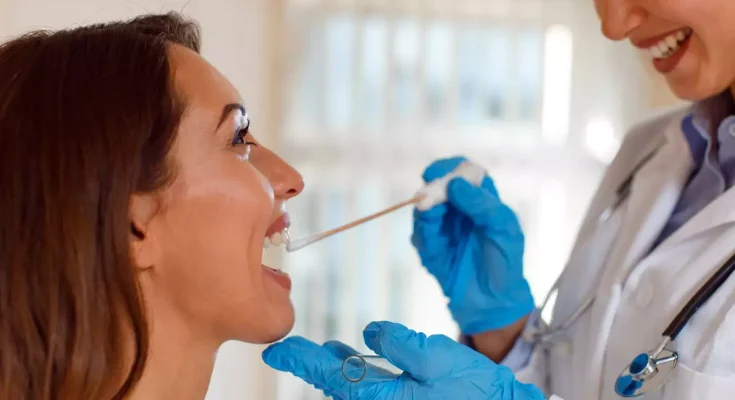Oral cancer is one of the most prevalent cancers of the head and neck region, suffered by millions globally. Early detection is crucial to manage the disease since it can be effectively cured in the initial stage. Thus, knowing the warning signs can make a huge difference in the disease prognosis.
Oral cancer exams performed by the dentist in Kings Mountain, NC, can help detect symptoms in an early stage for planning the appropriate treatment modalities.
An insight into oral cancer
Oral cancer, also known as mouth cancer or cancer of the oral cavity, is classified as head and neck cancer. It is often used to describe a number of cancers that start in the region of the mouth. Cells involuntarily multiply and proliferate to form abnormal tissue masses that can eventually spread to other parts if not treated.
Warning signs of oral cancer
During routine dental check-ups, your dentist may go a step ahead to check the entire oral cavity for any early pathological signs. These include:
- White patches on the floor of your mouth that fail to heal
- Slow-healing sores that are painful and bleed easily
- Leukoplakia like hardened white or gray, raised lesions inside your mouth
- Presence of sore lumps or thickenings in your mouth or throat
- Inability to open or close your mouth completely
- Loss of taste due to damage to the taste buds
- Burning sensation in the mouth
Significance of oral cancer exam
Oral cancer is a serious and life-threatening disease. However, it can be treated successfully if detected early on. The main goal of oral cancer screening is to identify precancerous (abnormal tissue growths that may lead to malignancy) lesions. Cancer at the initial stage is easiest to treat and most likely curable. Knowing the warning signs of oral cancer plays a significant role in determining its stage.
Oral cancer screening explained
Oral cancer screening is pain-free and is usually not a cause of concern.
- A standard oral screening begins with a medical history checkup.
- Your family’s medical history is also examined to determine the likelihood of developing oral cancer.
- You are then provided with a physical examination, which involves digital palpation and dental inspection.
- If there are any suspicious areas, you will then be subjected to higher levels of diagnostic tests. The laboratory tests include:
- Complete blood count
- CT (Computed Tomography) scan
- MRI (Magnetic Resonance Imaging)
- Panendoscopy (examination of the pharynx, larynx, trachea, and esophagus)
- Fluorescent light test
- Exfoliative cytology
When cancer cells are diagnosed early, there is a high chance that tumor cells can be removed completely.




